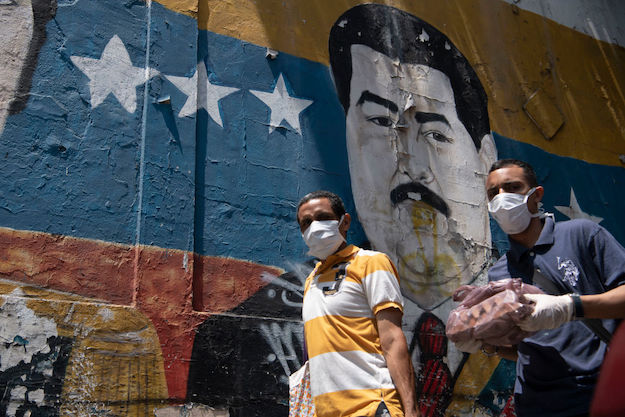In February 2016, the government of Nicolás Maduro decreed the creation of a National Strategic Development Zone, currently known as the Orinoco Mining Arc.
Four years later, the Mining Arc has become a major ecological crime and natural disaster that has affected the waterways of the areas where government, private and illegal organizations operate.
The Suapure, Cuchivero, Paragua, Caura, and Aro rivers have been greatly affected by the effects of the use of mercury in the exploitation of gold and other minerals in the Mining Arc. These streams flow into the Caroní and Orinoco rivers, two important sources of hydrological power in the country. The Orinoco River passes through the entire state of Delta Amacuro, Bolívar and Amazonas and is joined by the Meta that flows from eastern Colombia.
A recent article explains how the Mining Arc has disrupted the indigenous lands of the Pumé and Kariña peoples in the state of Bolívar and the lands of the Warao that inhabit the north bank of the Orinoco River near the town of Barrancas, Monagas state.
Maps published by different organizations reveal the extension of the Mining Arc into the territories of ten different indigenous communities in Venezuela.
The decision of the Venezuelan government to establish a mining area along the banks of the Orinoco River was repeatedly questioned by different indigenous organizations, foundations and individuals who foresaw what is happening today.
According to Nicolás Maduro, this territory holds 7,000 tons of gold reserves, as well as copper, diamond, coltan, iron, bauxite and other minerals of high industrial value. The Orinoco Mining Arc comprises a surface equivalent to 12.2% of the national territory.
Humanitarian crisis and migration
According to numbers from Programa Lupa, “5,020 indigenous Venezuelans are registered in Brazil. 66% of them belong to the Warao ethnic group, while 30% are Pemón. The Kariña and the E´ñepá account for 1% and 3%, respectively”, reports the Venezuela Migrante website.
For its part, UNHCR has warned that indigenous Venezuelans are fleeing the humanitarian crisis and the effects of the COVID-19 pandemic.
Amid the exodus, “some also face the threat of irregular armed groups, which control the areas where they live,” warned Shabia Mantoo, a UNHCR spokesman.
A large part of the reasons for the flight of indigenous people from Venezuela have to do with extractivist activities in the mining area.
The pollution of waterways has also impacted fishing, the main source of protein for the Warao people in Delta Amacuro. This situation, coupled with the lack of health personnel and medical equipment to treat people, has caused an incremental exodus.
Despite the restrictions on movement imposed by the national government, the migration of the Warao people does not stop. According to the state attorney of the Brazilian region of Paraíba, José Godoy, 70 Warao were registered in the area before the pandemic, a number that rose to 300 by July 2020.
Abandonment by the Venezuelan government has also encouraged the migration of the indigenous people. The handling of the pandemic by the Venezuelan authorities did not incorporate differentiated public policies to address the needs and challenges of the 55 indigenous peoples of Venezuela.
Translated by José Rafael Medina




